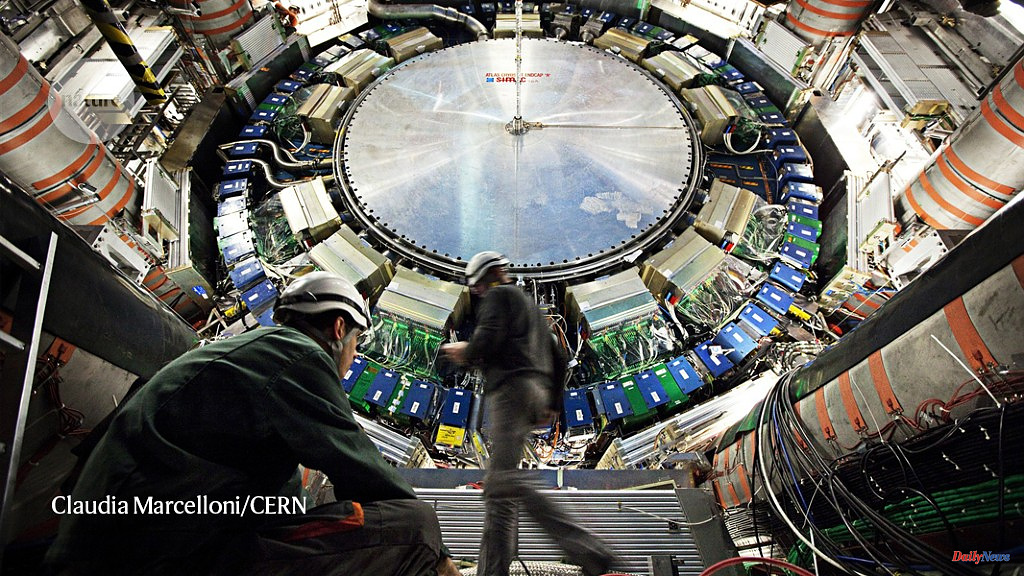On the 4th of July 2012, scientists all over the globe celebrated the important news that Higgs boson researchers had discovered evidence to support its existence ten years ago. Teams working at CERN's Large Hadron Collider (LHC), discovered the fundamental particle. It was predicted that it would exist in the mid-1960s1,2. This was the crowning achievement of the LHC and the thousands of engineers and technicians who contributed to its success.
Yet, even as the LHC prepares for the third of its five planned runs, some believe that this could be the final gasp for particle Physics -- or at least for physics dealing high-energy particle collisions. They have good reasons. The researchers wanted to improve upon the existing theoretical description of fundamental particles, and how they interact -- known as the standard model for particle physics. This model is incomplete. Many people are disappointed that LHC has yet to find any evidence of something that is different from the standard model. This could be a step toward a more complete theory.
The standard model is a collection of theories that were developed between 1950s and 1970s. It is not able to incorporate gravity or dark matter. It also doesn't account for the Universe's abundance of matter over antimatter.
The search for answers leads to the creation of new particles by theoretical physicists who routinely postulate the existence of new particles. Some of these particles should be detected within the detection limits of existing colliders. The LHC, the largest particle accelerator in the world, has yet not found any. If the LHC fails to find the right products, some fear the LHC will cause havoc in the field. Critics claim that governments cannot expect to spend billions of dollars on another large-scale collider without clear evidence. The field could soon die without a collider.
These concerns are valid, but they assume the LHC's sole purpose to hunt for particles. It is not trivial to spot a new particle. Particle colliders like the LHC are essential for understanding how well-known particles behave, including the Higgs boson. Although Peter Higgs, a physicist, is a well-respected name in science and a prominent figure in the field of physics, researchers still have little information about the particle that bears Higgs's name. Collision after collision, the LHC continues to provide new information about Higgs boson.
CERN researchers estimated the mass in 2012 of the newly discovered particle. Although they tentatively called it the Higgs boson candidate, they knew that further evidence was needed to prove that the candidate matched the predictions of the standard model.
The theory states that particles don't have mass. Instead, they interact with the Higgs field or Brout-Englert Higgs fields, which permeates the whole Universe. A wave in this field is the Higgs boson. It is expected that any particle's interaction with the Higgs field will be proportional in strength to its mass. This means that heavier particles such as the top quark should interact more strongly than lighter ones.
The LHC has provided 30 times more data since 2012 on particle collisions involving a Higgs boson. These data have been used by the CMS and ATLAS collaborations to report this week results on Higgs's interaction with heavy particles3. These results are in line with what theoreticians predicted more than 50 years back.
Researchers must also study the interactions between Higgs boson particles and lighter particles to complete the picture. These are the particles that make up the building blocks of everyday material, such as electrons. Giulia Zanderighi from the Max Planck Institute for Physics, Munich, Germany and her colleagues discuss in Perspective that the LHC should allow scientists to move towards this goal, although a new generation colliders is likely to be required. These interactions at the LHC and the question of whether other experiments are needed are both areas of active research.
Deeper questions remain about the Higgs boson. It interacts in the Universe through no other known particles than the electromagnetic force, weak and strong nuclear forces, or the gravitational force. This remarkable feature is hoped to help physicists answer fundamental questions. If the Higgs boson interacts, for example, with dark matter or other unknown particles, these interactions could leave an observable mark in the boson’s behavior. These questions have been explored by experimental and theoretical physicists since before 2012's discovery. So resolution may still be some time off.
The work of particle physics has not been completed with what Thomas Kuhn, physicist-philosopher, famously called "normal science" in his book The Structure of Scientific Revolutions (1962). Kuhn's "normal science" describes scientists who observe, experiment, and theorize within a framework such as the standard model. Kuhn called this a "paradigm change", which is a fundamental shift in the way we view evidence. Rolf-Dieter Heuer was the director-general at CERN during the Higgs discovery. Nature Physics explains that LHC data is also required in the search of physics beyond the standard model6. A good understanding of the expected is essential to spot an anomaly.
We urge those who are concerned that particle physics is in its final days to let science take its course. To be ready for unexpected outcomes, and to remember that it took over four decades for an aspect of a theory that was confirmed experimentally, to do so, we encourage you to trust science. Although the process is rarely the focus of science news, it is just as important as the final result.












